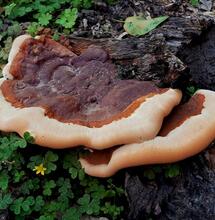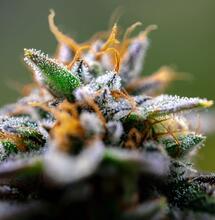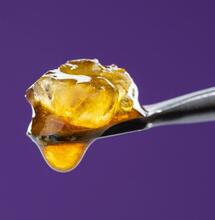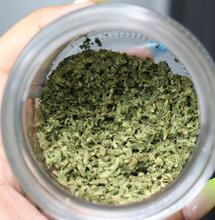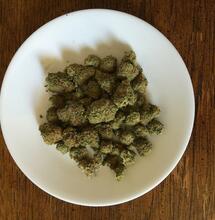Transdermal Cannabis Patches for Pain, Inflammation, Sleep

Transdermal patches are applied on the skin and can contain different medications such as fentanyl for pain relief, nicotine to help quit smoking, or clonidine to treat hypertension. With the rise of the cannabis industry, transdermal patches containing CBD, THC, CBN and other cannabinoids have also been developed. Depending on what cannabinoids are concentrated in the patch, it can help with pain relief, inflammation, insomnia, and a range of other health conditions.
Transdermal patches have been around for a little over four decades now. The scopolamine patch for motion sickness entered history as the first FDA-approved transdermal patch product in 1979. Shortly after that, the nitroglycerin patch was approved, billed to improve heart health.
The most famous transdermal patch is likely the nicotine patch, introduced in the early 1990s to help tobacco users suppress smoking.
Transdermal patches work as handy alternatives for pills or injections. When it comes to cannabis, plasters offer a unique way for cannabinoids to dispense into the body. It's perfect for those medical users who dislike the idea of smoking pot, and as a bonus, the patch can be easily concealed out of sight and can be used at any place.
Transdermal cannabis patches can contain a single isolated cannabinoid such as CBD, THC, or CBN or have split ratios such as 1:1 THC:CBD. CBD and THC patches are usually attached to the skin to reduce inflammation or target specific pain points on the body, while CBN patches may in particular help those with troubled sleep.
Patches offer a long-lasting response. Once applied over a venous area of the body, cannabinoids start to penetrate the skin and enter the blood system slowly. Body heat helps with activating the patch and stimulating the chemicals trapped in the sticky plaster.
When used for pain, patches dispense more cannabinoids into the bloodstream that will reach the specific area of pain in the body than oral CBD. It works extremely fine for particular pains, such as pains in the back. The plaster should be applied directly onto the area of pain in this case.
Those with sensitive skin should remain cautious with patches, however. Manufacturers often add chemical carriers to help the cannabinoid penetrate the skin and enter the blood vessels, and some people may be allergic to these chemicals.
While a patch can contain a mix of different cannabinoids to engage the endocannabinoid system and medicate the body, users will not experience the full entourage effect. In other words, if you are up for getting a great high from applying a medical cannabis patch onto your skin, you might be disappointed. Save your best high for vaping or dabbing.

CBD Patches
CBD patches are commonly used for pains. Attaching one onto the skin generates nearly the same effects as when CBD is taken orally. Medical experts also say that CBD patches have few other advantages.
CBD that penetrates the body via the skin is not metabolized in the stomach. This shortened route allows a greater concentration of cannabidiol to accumulate in the blood vessels, and more of it arrives at the site of pain. In addition, CBD patches are typically designed to stay on the body for a couple of days. The patch slowly and gradually releases the cannabidiol doses onto the target area.
CBD patches can contain CBD isolate alone or it can be a broad-spectrum product. If the patch is made with full-spectrum CBD, it does contain trace amounts of THC. Therefore, if you want to avoid any presence of THC in your body because of drug tests at work or when entering countries where THC is prohibited, it's best to avoid full-spectrum products.
CBD isolate patches with up to 20 milligrams of CBD are the recommended dose for those new to Cannabidiol. That's enough to adjust the body on the cannabinoid and then can start increasing as needed. The most potent CBD patches contain up to 100 mg doses of CBD. Social CBD, PureKana CBD, and Envy CBD Relief Wrap are some of the brands to consider for first-time use.
THC Patches
Just like CBD patches, THC patches are applied to a venous area of the body, such as the ankle or arm, and offer a long-lasting relief for various conditions, most notably chronic pains. A lot of brands combine THC and CBD to increase the product potency and effectiveness.
One of the most often asked questions is whether THC-dominant patches can get you any high. Since this is a transdermal delivery of THC that happens gradually over several hours, typically four to six, the THC will not deliver the exact effects anticipated from smoking, vaping, or dabbing. There might be noticeable signs of feeling high, but the sensation is nowhere near strong as with other methods of delivery where the onset of THC in the body is almost immediate.
THC patches are primarily for medical use and can help with various conditions where pain is manifested, including cancer and neuropathy.
CBN Patches
Billed as the new wonder drug, CBN is generally a less known cannabinoid, and users particularly praise it for its ability to help improve sleep. This is the primary function of a bandage dominant on CBN. Apart from sleep, CBN also helps with pain and inflammation, so it is often combined with CBD and THC or both.
People who've used CBN patches for sleeplessness and restlessness at night say that it helps them fall into a deep state of sleep and wake up refreshed in the morning. Other reported reactions include suppressed appetite and mild psychotropic effects with a hint of euphoria.
Also known as the "sleeper" cannabinoid, CBN's sedative effects can also be experienced through other products such as CBN oils, gummies, capsules, and gel pens.
How to Use Cannabis Transdermal Patches?
The skin where the transdermal cannabis plaster is attached should be clean from any dirt, lotions, oils, or powders. Before applying the cannabis patch, the skin should be cleaned with warm water and a simple soap solution. No strong scents or cosmetics that can actually irritate the skin. The transdermal patch can be attached once the skin is dry. If the patch tears apart accidentally, it should be disposed of.
Patches can have one or two protective liners that are peeled off to expose the sticky side that goes onto the skin. With the sticky side down onto the clean skin area, the plaster is pressed down firmly with the palm to ensure it remains attached for its estimated duration.
If the band-aid is adhesive, you can remove it from the package and stick on the site that's sore and aching. Adhesive patches are optimal for soft tissues such as for the back, but not joints or elbows where it can detach with movement.
Each packaging of cannabis transdermal patches includes instructions that show how much time a single plaster should be worn. Keep it on the skin for the maximum hours recommended, after which you remove and reapply a new bandage as needed.
Also read on Soft Secrets:
- What Types of Medicinal Cannabis Are There?

